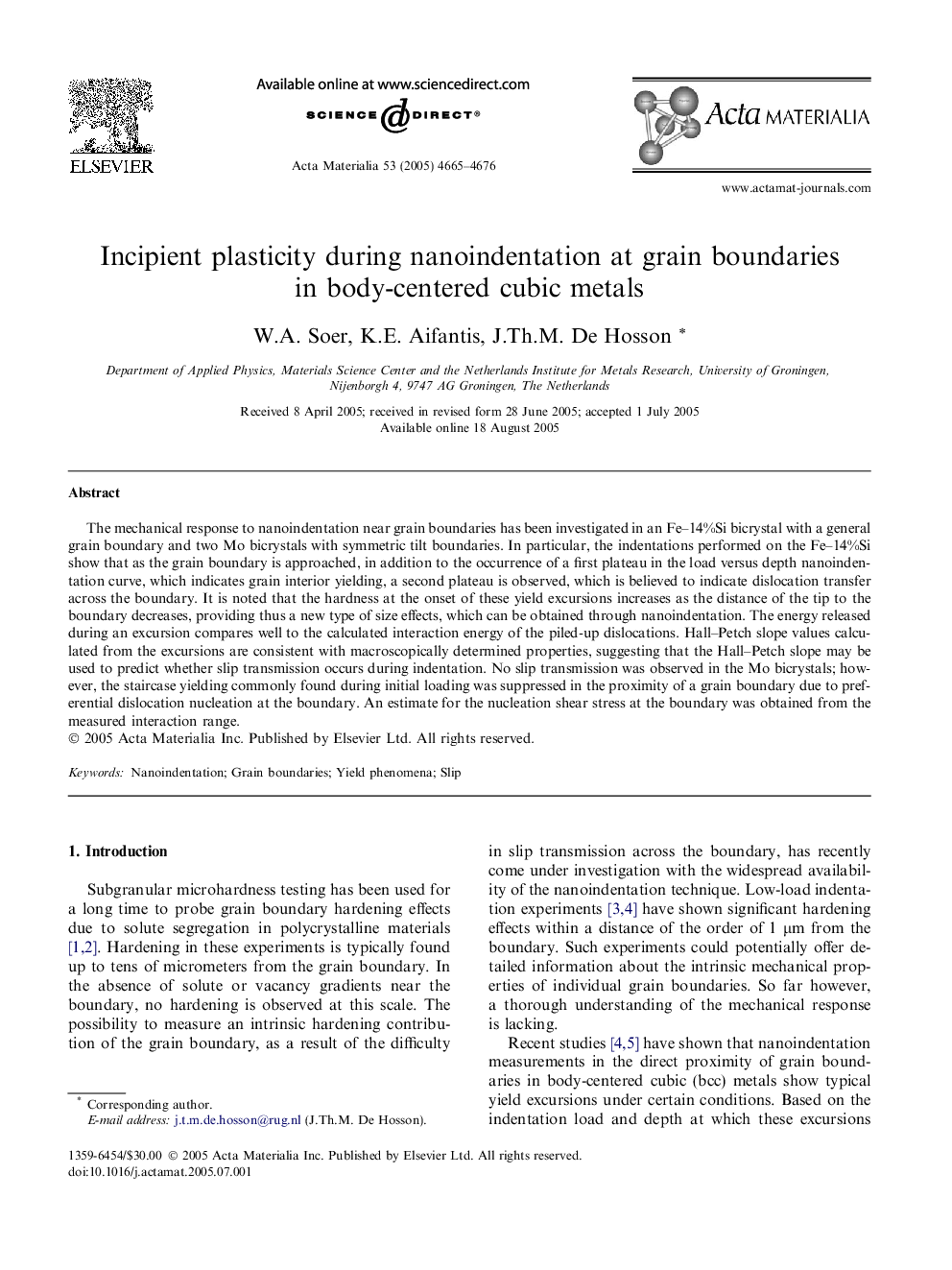| Article ID | Journal | Published Year | Pages | File Type |
|---|---|---|---|---|
| 1450965 | Acta Materialia | 2005 | 12 Pages |
The mechanical response to nanoindentation near grain boundaries has been investigated in an Fe–14%Si bicrystal with a general grain boundary and two Mo bicrystals with symmetric tilt boundaries. In particular, the indentations performed on the Fe–14%Si show that as the grain boundary is approached, in addition to the occurrence of a first plateau in the load versus depth nanoindentation curve, which indicates grain interior yielding, a second plateau is observed, which is believed to indicate dislocation transfer across the boundary. It is noted that the hardness at the onset of these yield excursions increases as the distance of the tip to the boundary decreases, providing thus a new type of size effects, which can be obtained through nanoindentation. The energy released during an excursion compares well to the calculated interaction energy of the piled-up dislocations. Hall–Petch slope values calculated from the excursions are consistent with macroscopically determined properties, suggesting that the Hall–Petch slope may be used to predict whether slip transmission occurs during indentation. No slip transmission was observed in the Mo bicrystals; however, the staircase yielding commonly found during initial loading was suppressed in the proximity of a grain boundary due to preferential dislocation nucleation at the boundary. An estimate for the nucleation shear stress at the boundary was obtained from the measured interaction range.
